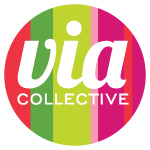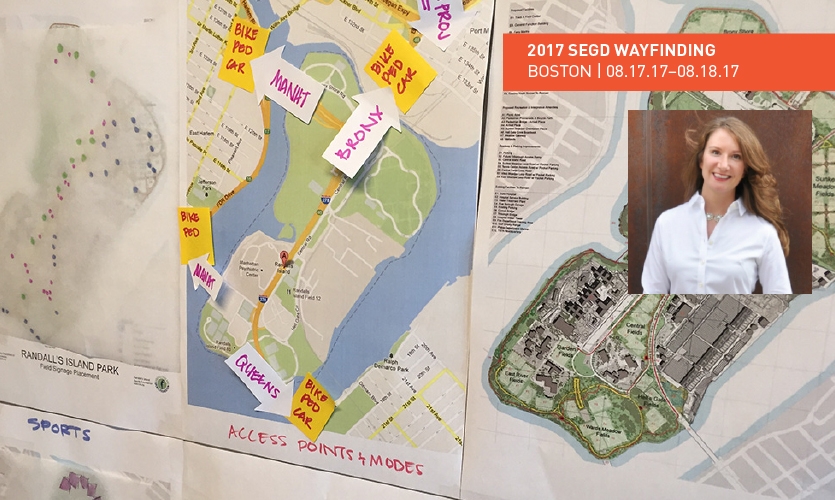Prior to presenting at this year’s SEGD conference, Katie sat down with SEGD to share her professional journey, what inspires her, and details on her upcoming presentation at SEGD Boston. Below is the interview, originally published on segd.org
How did you get into wayfinding as a career path?
My degree is in graphic design, but I was always more interested in how various types of design worked together rather than just a single item. I was always asking “why” people decide on engaging with one thing over another. These questions eventually led me from print to the interaction of the urban environment and how design impacts people’s feeling of a place.
What are the biggest challenges in using wayfinding to connect people to place?
A lot of people view wayfinding as “signage,” but it’s much bigger than that. Working with clients and collaborators that understand and engage in multiple ways to help people navigate, such as lighting or landscape, creates a stronger solution and always enhances the visitor experience.
In what ways are strategy and user research important for wayfinding designers?
Without understanding who we are designing for and deploying research to discover what they need, there is no way to design programs that improve the visitor experience. Wayfinding strategies that are based in user research will connect directly back to the community that utilizes the space.
What are some of your favorite examples of wayfinding projects that transform public space?
- The work that the Japanese firm Party did for Narita Terminal 3 is one of my favorite examples of combining ideas to transform an experience in unexpected ways.
- The terminal map feature in the American Airlines app is very helpful, even when you’re not flying on American.
- When I was eight years old, the Minnesota Zoo launched a new wayfinding system designed by Lance Wyman. I did not know what wayfinding was at 8, but I know that I loved the signs and the way the shapes of animals were integrated into the system. I recently met Lance at the 2017 SEGD Conference in Miami and had a great time speaking with him about the work he did there.
Describe the most exciting wayfinding project you’ve worked on.
I’m very drawn to the transportation work we’ve done as it is fundamental to the function of a city and connects directly to people’s lives and their day-to-day activities. Early in my career, I worked on the World Trade Center Path station with Santiago Caltrava, which was incredibly inspiring. Currently we are working on Grand Central Terminal and 35 subway stations.
What do you hope to communicate in your session, “Transforming Public Space Through Wayfinding Strategy and User Research”?
The importance of connecting with, and designing for, the people who are using the space.
What are you most excited about for the 2017 SEGD Wayfinding event in Boston?
I’m looking forward to connecting with others who get as excited about wayfinding as I do!

